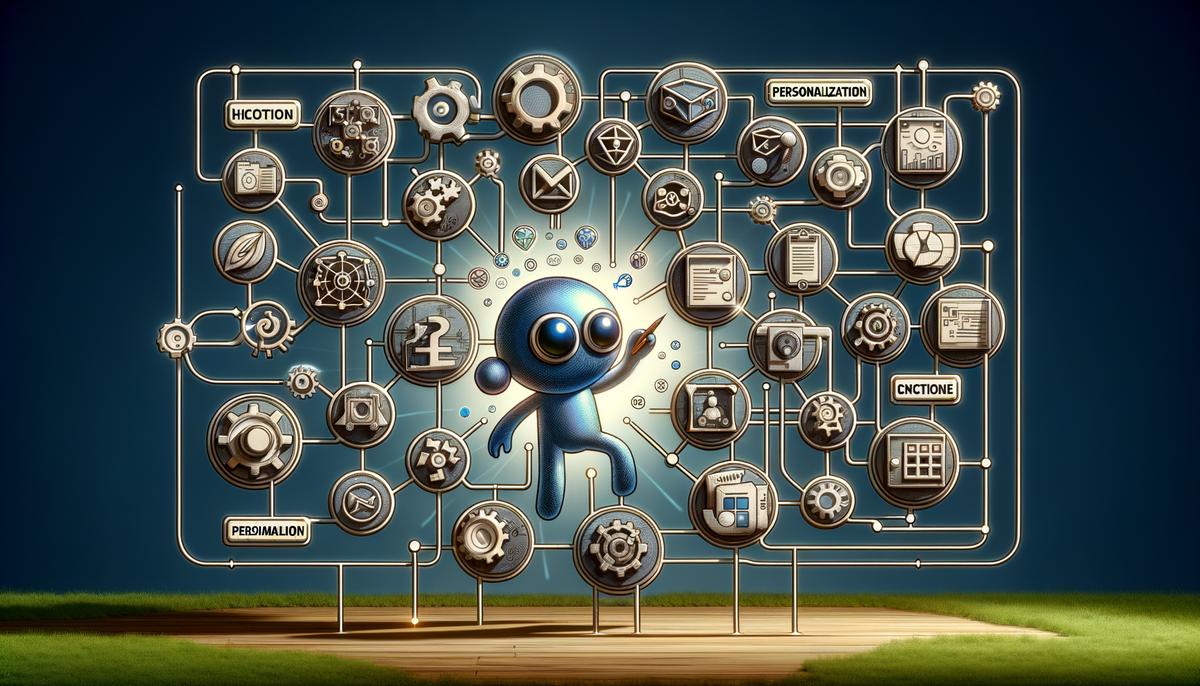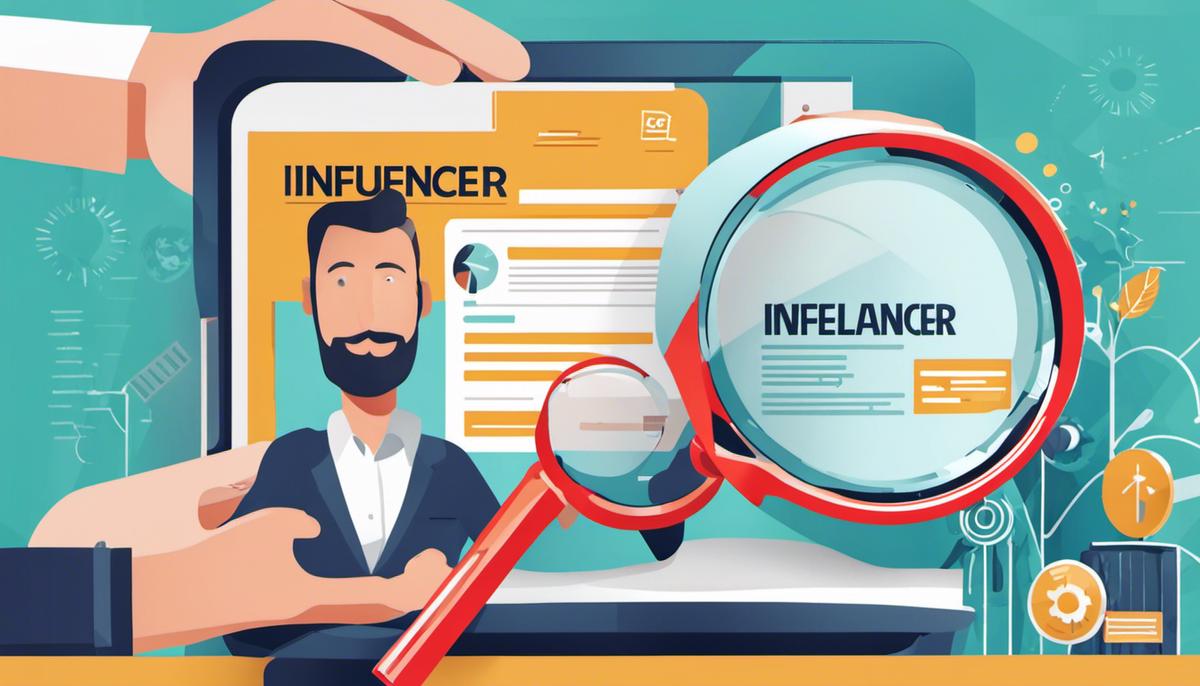Personalization in the digital marketing landscape is more than just a buzzword; it’s a critical component of engaging and retaining customers. With advancements in technology and analytics, personalized marketing has transformed from a nice-to-have to a must-have strategy. This exploration will dissect the essence of personalization, illustrating its significance through various strategies and technological innovations. By doing so, we aim to illuminate how tailoring marketing efforts to individual preferences can cultivate deeper connections with audiences and drive success in today’s competitive digital realm.
Understanding Personalization
What Makes Personalization the Heart of Digital Marketing?
In the ever-evolving world of digital marketing, personalization stands out as a shining star, proving itself as the heart of effective strategies. Why, you ask? Because today, consumers don’t just enjoy personalized experiences; they expect them. In the vast sea of online interactions, personalization is what makes your message resonate with someone on a deep, meaningful level. It’s like walking into your favorite coffee shop and the barista knowing your order — it feels special, right? This is what personalization does in digital marketing, creating connections that are not just transactions but relationships.
At its core, personalization is about crafting marketing experiences tailored to individual preferences, interests, and behaviors. Thanks to the magic of data analytics and machine learning, businesses can now understand their customers like never before, paving the way for personalized marketing that hits the right notes.
Let’s dive into why personalization is not just a trend but the backbone of a successful digital marketing strategy.
- Increases Engagement
Imagine scrolling through your social media feed and spotting content that feels like it was made just for you. You’re likely to stop and engage with it, right? Personalized content grabs attention in a cluttered digital world, increasing engagement rates significantly. It’s the difference between a generic “Hey there” and a “Hey [Your Name], check this out!” The latter feels more inviting and is more likely to get a response.
- Boosts Conversion Rates
When marketing messages are personalized, people feel understood. This understanding builds trust, and trust boosts conversion rates. For instance, personalized email campaigns have shown to dramatically improve open and click-through rates. Why? Because they address the recipient’s specific needs or interests, making the call-to-action more compelling.
- Enhances Customer Loyalty
Personalization goes beyond initial conversions; it’s a powerful tool for building and sustaining customer loyalty. Offering personalized recommendations or rewards based on past purchases or browsing behavior makes customers feel valued and seen. It turns one-time buyers into repeat customers and, eventually, into brand advocates.
- Provides Valuable Insights
The beauty of personalization in digital marketing is that it’s a two-way street. While customers enjoy tailored content, businesses gain valuable insights into their preferences and behavior. This data is gold, helping marketers fine-tune their strategies, develop better products, and offer more relevant services.
- Cuts Through the Noise
In the digital age, consumers are bombarded with information. Personalized marketing cuts through this noise, delivering content that speaks directly to the individual. It’s like finding a needle in a haystack, except the needle comes to you. By addressing the specific interests or needs of your audience, you ensure your message is heard loud and clear.
- Cost-Effective
Some might think personalization requires a hefty investment, but it’s actually cost-effective. By targeting specific segments with tailored campaigns, businesses can allocate their resources more efficiently, ensuring higher returns on investment. It’s smarter spending, with every dollar working harder to connect with the right audience.
In conclusion, personalization is the heartbeat of digital marketing for a reason. It transforms the customer experience, making marketing messages not just heard, but felt. In a world where consumers crave authenticity and individuality, personalization stands tall as the key to unlocking deeper, more meaningful connections. It’s not just about selling products or services; it’s about building relationships, one personalized interaction at a time. So, if you want your digital marketing efforts to truly resonate, remember: personalization is not just a nice-to-have, it’s a must-have.

Technologies Behind Personalization
Let’s dive into how technology acts like a superhero, powering up personalization in ways we never thought possible. Imagine walking into a party and everyone knows your name, your favorite song is playing, and your drink of choice is handed to you right at the door. That’s the kind of VIP treatment technology enables businesses to give their customers, making everyone feel special and understood.
First off, we have data analytics and big data. These tech tools are like the masterminds of personalization. Companies can sift through mountains of data to learn about your preferences, past purchases, and even predict what you might like in the future. With this information, businesses tailor their marketing messages so precisely that you feel like they’re speaking directly to you. It’s not magic, it’s just smart tech at work!
Next up, Artificial Intelligence (AI) and Machine Learning (ML) are the dynamic duo in personalization. They take what data analytics finds and put it into action. Ever wonder how streaming services know exactly what movie to recommend next or how online stores send you those “just for you” product suggestions? That’s AI and ML in the driver’s seat, constantly learning from your choices to serve you better and more personalized options each time.
But it doesn’t stop there. Chatbots and virtual assistants add another layer of personal touch. These tech helpers use natural language processing to chat with you like a human would. They remember your name, your last question, or even your product preferences, making customer service chats feel more like talking to a friend who knows you well.
Social media platforms aren’t left out either. They use technology to analyze your online behavior, understanding what content you engage with the most. This way, they can personalize your feed, showing more of what you like and less of what you scroll past. It’s like having a personal DJ for your social media experience, always playing the hits you love.
Lastly, IoT (Internet of Things) devices bring personalization into our homes and daily lives. Smart thermostats learn our preferred temperatures, smart fridges keep track of our favorite snacks, and fitness trackers motivate us based on our personal health goals. It’s as if our gadgets get to know us better than we know ourselves, making our lives easier and more tailored to our preferences.
In embracing these technologies, businesses are not just selling products or services; they’re crafting individualized experiences that resonate on a deeper level. It’s like everyone gets a backstage pass tailored just for them, making each interaction feel unique and valued. This not only elevates the customer experience but also sets brands apart in a crowded market where personal touch is the golden ticket.
So there you have it, the secret sauce to personalization is a blend of cutting-edge technology and clever use of data. It’s clear that as technology advances, the possibilities for personalization are only going to get more exciting and innovative. Whether it’s through AI, chatbots, or IoT, technology is the powerhouse behind the curtain, making personalization an integral part of our digital lives. And honestly, who doesn’t love feeling like the star of the show?

Personalization Strategies
Now that we’ve covered the basics of personalization in digital marketing, let’s dive deeper into the winning strategies that make personalization not just a buzzword, but a real game-changer in connecting with your audience. Remember, successful personalization is all about tailoring experiences to individual needs, and these strategies are designed to help you do just that. So, let’s get into it!
1. Segment Your Audience
The first step towards effective personalization is understanding that not all your customers are the same. Segmenting your audience based on demographics, behaviors, preferences, and purchasing history allows you to tailor your messages and offers more precisely. Think of it like having different conversations with your friends based on what you know they like; it just makes the interaction more meaningful.
2. Use Personalized Email Marketing
Email marketing is not dead; it’s just evolved. Using personalized email campaigns where the content is specifically tailored to the recipient can significantly increase open rates. Include their name, recommend products based on past purchases, and send them content that matches their interests. It makes the recipient feel like you’re speaking directly to them, not just sending out a mass email to everyone on your list.
3. Create Dynamic Website Content
Imagine visiting a website that morphs to fit your interests and needs—sounds pretty cool, right? That’s what dynamic website content can do. By leveraging cookies and browsing history, you can display content, products, or offers that are most relevant to each visitor. It’s like having a personal shopper on your website, guiding the visitor through a tailored shopping experience.
4. Leverage Retargeting Campaigns
Retargeting campaigns are a powerful way to bring back visitors who didn’t convert the first time around. By showing them personalized ads based on their previous interactions with your site, you’re reminding them of what caught their eye and enticing them to take another look. It’s a gentle nudge to bring them back into the fold.
5. Implement a Recommendation Engine
Ever wonder how platforms like Netflix or Amazon seem to know exactly what you want? That’s the power of recommendation engines. These sophisticated systems analyze your behavior and preferences to suggest products or content that you’re likely to enjoy. Incorporating a recommendation engine on your site can enhance the user experience by magically surfacing items they love but might not have discovered on their own.
6. Engage Through Social Media
Social media platforms are not just channels for broadcasting your message; they’re arenas for engagement. Engage with your followers personally by responding to comments, launching polls or quizzes, and sharing content that speaks to individual interests or community trends. It fosters a sense of connection and community, making your brand more relatable and personable.
7. Use Personalized Video Content
Video content is king, but personalized video content? That’s the emperor. Personalized videos that include the viewer’s name or details, tailor the storyline to their interests, or even feature products they’ve been eyeing can significantly increase engagement. It’s an innovative way to captivate your audience and make them feel special.
8. Gather and Act on Feedback
Last but not least, effective personalization requires listening. Gather feedback through surveys, reviews, or direct customer interactions, and use that information to refine your strategy. Understanding what your customers love and where they think you could do better is invaluable for creating more personalized and impactful experiences.
With these winning strategies in your toolkit, you can elevate your personalization game and create more meaningful, engaging connections with your customers. Remember, effective personalization is all about understanding and addressing the unique needs and preferences of your audience. By implementing these approaches, you’re not just marketing smarter; you’re building lasting relationships.
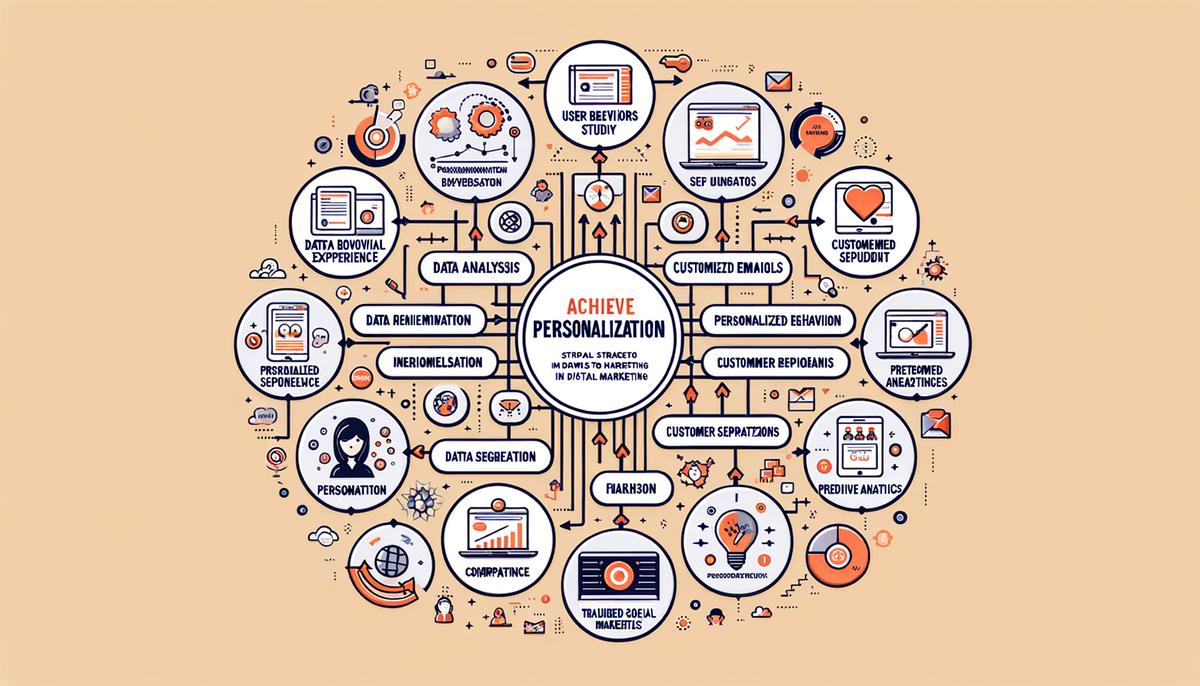
Challenges and Solutions in Personalization
While personalization has revolutionized how marketers connect with their audience, orchestrating this tailored approach comes with its set of challenges. Tackling these effectively can significantly elevate a brand’s marketing strategy. So, what are these hurdles, and how can marketers leap over them to a personalized marketing victory?
Privacy Concerns and Data Security
In today’s digital age, privacy is paramount. Customers are increasingly wary about how their data is being used. This skepticism can make them hesitant to share the information necessary for personalization. To overcome this, transparency is key. Brands must clearly communicate how they collect data, its purpose, and how it enhances the customer experience. Implementing and maintaining robust data security measures also builds trust, reassuring customers their information is in safe hands.
Overcoming the ‘Creepy’ Factor
There’s a thin line between personalized and intrusive. Sometimes, when brands know too much, it can feel downright creepy to customers. The solution? Balance and relevance. Personalized content should always provide value and be based on previous interactions that make logical sense to the consumer. This not only diminishes the ‘creepy’ factor but enhances user engagement.
Deciphering Data Complexity
With the vast amount of data available, deciphering what is valuable can be like finding a needle in a haystack. Analysis paralysis can set in, delaying action. To navigate through this, marketers must focus on key data points relevant to their specific personalization goals. Employing advanced analytics tools can help sift through the noise, identifying actionable insights that drive meaningful personalization.
Ensuring Cross-Channel Consistency
Providing a cohesive experience across all platforms is essential but challenging, especially with multiple teams handling various touchpoints. Unified communication and a central personalization strategy are vital. Integrating a Customer Relationship Management (CRM) system ensures that every team has access to the same customer data, facilitating a seamless and consistent experience across all channels.
Keeping Content Fresh
In the fast-paced digital world, content can quickly become outdated. For personalization to be effective, content must remain fresh and relevant. This requires agile content creation strategies and the ability to quickly adapt to changing customer preferences or behaviors. Leveraging AI for content recommendations and employing agile development methodologies can help marketers stay ahead of the curve.
Scaling Personalization Efforts
While personalization can start in a focused area, scaling it across a business can be daunting. Success lies in prioritization—identifying which personalization initiatives drive the most value and starting there. It’s also crucial to invest in technology that supports scalability, such as AI and automation tools, which can handle increased volumes without sacrificing the personal touch.
Skill Gap
As personalization technologies evolve, a skill gap emerges. Staying ahead requires continuous learning and adaptation. Building a team with diverse skills—or upskilling existing team members in areas like data analytics, AI, and machine learning—ensures a well-rounded approach to personalization. Additionally, partnering with technology providers can fill in expertise gaps, keeping personalization strategies sharp and effective.
In conclusion, while the road to effective personalization in marketing is fraught with challenges, navigating these successfully can significantly amplify marketing outcomes. By prioritizing privacy, balancing personalization efforts, leveraging technology, and continuously updating skills, marketers can transform these hurdles into stepping stones towards building deeper, more meaningful relationships with their customers. Engaging in this journey not only elevates the customer experience but also sets brands apart in an increasingly crowded digital landscape.
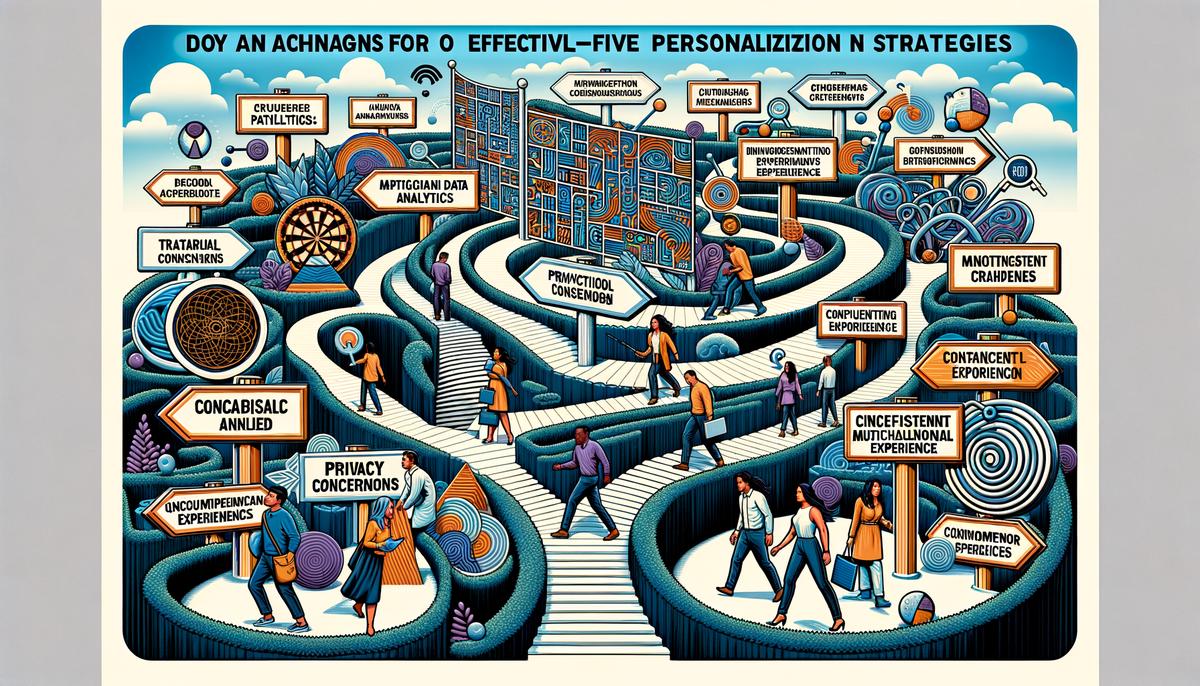
Measuring the Impact of Personalization
Now that we’ve dived deep into the world of personalization in digital marketing, it’s time to tackle a crucial piece: measuring the success of your personalization efforts. After all, what’s the use of investing time and resources into personalizing your marketing if you can’t tell whether it’s working or not? So, let’s break this down into bite-sized, actionable steps, just like we did with those side hustle ideas!
Understanding Metrics and KPIsFirst things first, let’s talk metrics and Key Performance Indicators (KPIs). Think of these as the pulse check on your personalization strategy. They’re not just numbers; they’re insights into what’s resonating with your audience. Some top-line metrics to keep an eye on include click-through rates (CTRs), conversion rates, and customer lifetime value (CLTV). If these numbers are going up, you’re on the right track.
A/B Testing is Your Best FriendEver wondered if a certain headline or email subject could perform better? A/B testing is like choosing between two side hustles to see which one brings in more cash. Try different versions of your website, emails, or ads, and let your audience’s reactions guide you. The version with a higher engagement or conversion rate tells you what your customers prefer.
Engagement Level AnalysisEngagement is like the applause at the end of your performance. Measuring how customers interact with your personalized content (think time spent on your site, comments, shares, likes) can give you a clear idea of what’s grabbing their attention and what’s not. Higher engagement levels often equal a more successful personalization effort.
Sales and Conversion TrackingAt the end of the day, it’s about the green, right? Tracking sales and conversions can directly link your personalization efforts to your bottom line. Use tools that track a customer’s journey from the first click to the final purchase. Notice a spike in sales after tweaking a personalized recommendation? That’s the sound of success.
Customer Feedback and Satisfaction Scores
Never overlook the power of simply asking your audience how you’re doing. Customer feedback and satisfaction scores (think Net Promoter Scores or NPS) are like honest reviews of your side hustles. They tell you straight up if your personalization is hitting the mark or if it’s time to go back to the drawing board.
- Retention Rates
If personalization is working, you won’t just see a flurry of one-time buyers; you’ll start to build a loyal customer base. High retention rates mean your personalization efforts are making customers feel valued and understood, encouraging them to stick around for more.
Lifecycle Value Analysis
Lastly, calculating the lifecycle value of a customer can show you the long-term impact of your personalization efforts. Are customers who experienced a high level of personalization spending more over time? If yes, you’re not just winning the battle; you’re conquering the kingdom.
In the world of digital marketing, personalization is akin to tailoring each piece of your offering to fit your customer like a glove. Measuring the success of these efforts ensures that your tailoring is spot on, leading to better engagement, higher conversion rates, and ultimately, a more successful and sustainable business.
Just like with side hustles, the key is to start simple, monitor closely, and adjust as you go. Use the metrics and strategies we’ve discussed as your toolkit, and you’ll be well on your way to personalization prowess. And remember, in the landscape of digital marketing, personalization isn’t just a trend; it’s the future. So, keep measuring, keep optimizing, and watch as your efforts pay off in more ways than one.
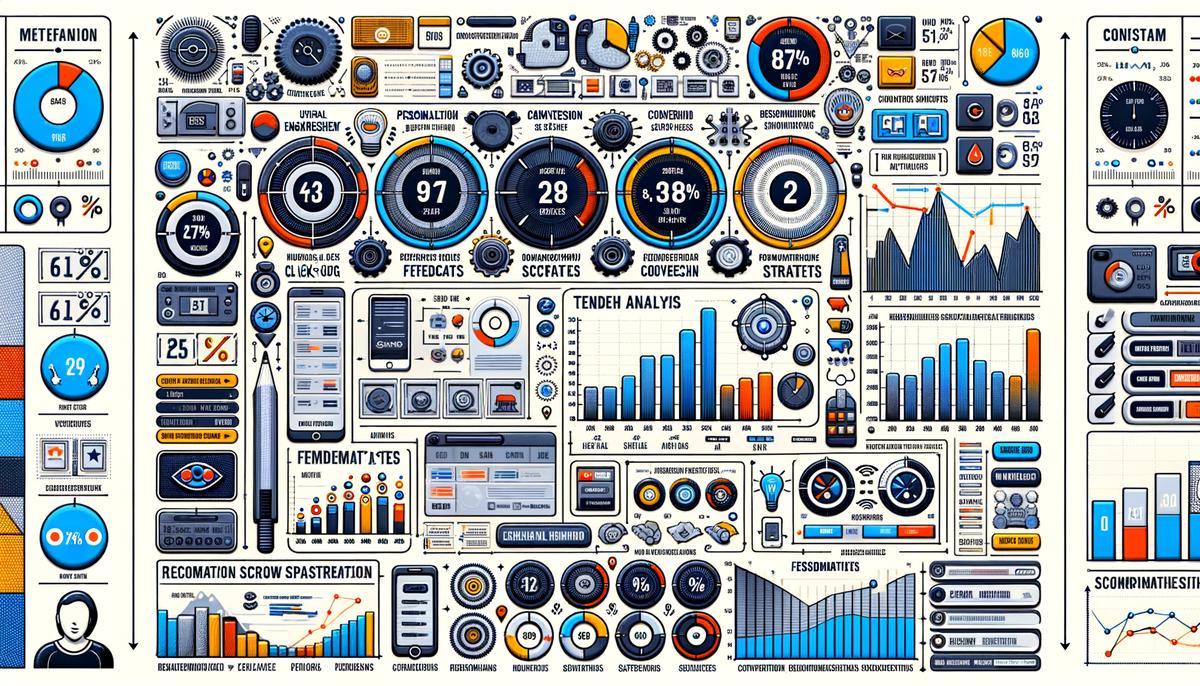
As we’ve seen, the role of personalization in digital marketing cannot be overstated. It’s the key to unlocking true customer engagement, driving higher conversion rates, and building lasting relationships. By focusing on the individual needs and preferences of your audience, and leveraging the right technologies and strategies, brands can create a marketing experience that feels both personal and profound. Remember, the ultimate goal of personalization isn’t just to increase immediate sales; it’s to foster loyalty and create a sense of belonging among your customers. When done correctly, personalization doesn’t just tell your audience you know what they want; it shows them you value who they are.
